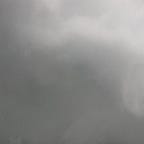Time in inkle’s 80 Days
What does the titular number of days refer to? A measurement of time and Jules Verne’s adventure novel Around the World in Eighty Days. Inkle’s videogame adaptation of this novel visualizes traveling and passage of time with the same brush that muddles and punctuates these representations. The game starts in London represented by a dot that connects to Cambridge and Paris with lines. These squiggly lines show potential roads between cities. Once one of them is embarked on, time starts to pass. This likens roads to linear representation of time.
What does this representation make of roads already traveled and roads yet to be traveled? Travel on the former has transpired while it’s yet to transpire on the latter. They represent the past and future in this understanding of time. But not every road can be embarked on and routes have been there before becoming visible for travel. The future in this sense is conceived by looking ahead. It makes plans for travel based on the past. Looking ahead isn’t concerned with a single road leading into the future but conceives future possibilities. These are multiple potentials rooted in one single past. The road represents the future by looking ahead and the past by being there as road. They’re copresent as past and future without being roads as present. Past roads may disappear as roads after becoming past, while future roads may disappear before becoming future roads. This disappearence-as-after and disappearence-as-before relates to becoming as appearance, the past and future differentiates, while roads are there without differentiation that appear in becoming past and future for travel.
During travel, a dot represents the movement of becoming through which past and future appear as road. This becoming is without present becoming since roads are laid down for continuous movement through which past and future appear. But in appearing as road of past and future, becoming is there in the present as continuous movement. This movement of becoming is present that creates past and future roads, making roads present before they become past and future. Present in this sense precedes past and future where past and future appear before and after. The past appears before as disappearence-as-after while the future appears as after as disappearence-as-before. Past and future appear in relation to present only to disappear in themselves that makes way to becoming past and future that’s present without appearing as present.
The preceding present of past and future leads roads towards an appearance of before that looks at after in a disappearing motion of becoming past and future. What is before remains etched as traversed road while what is after remains a potential road for traversal. This represents a perspective that looks at multiple roads into the future without looking at the single road it took before that defines what comes after. The past fades away in the movement of present to make way to a yet to be disappearing future. This movement imprints past and future to make them appear and disappear in present’s motion and to take breaks for seeing before and after that lead back to one another as circle.
